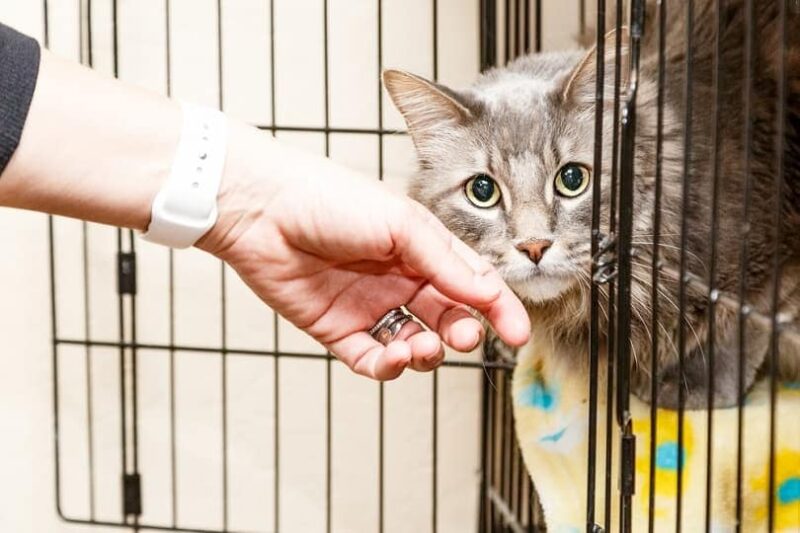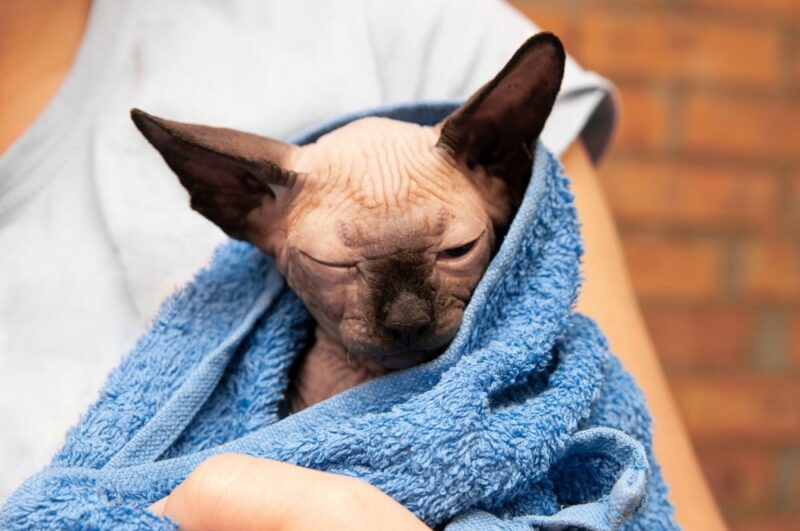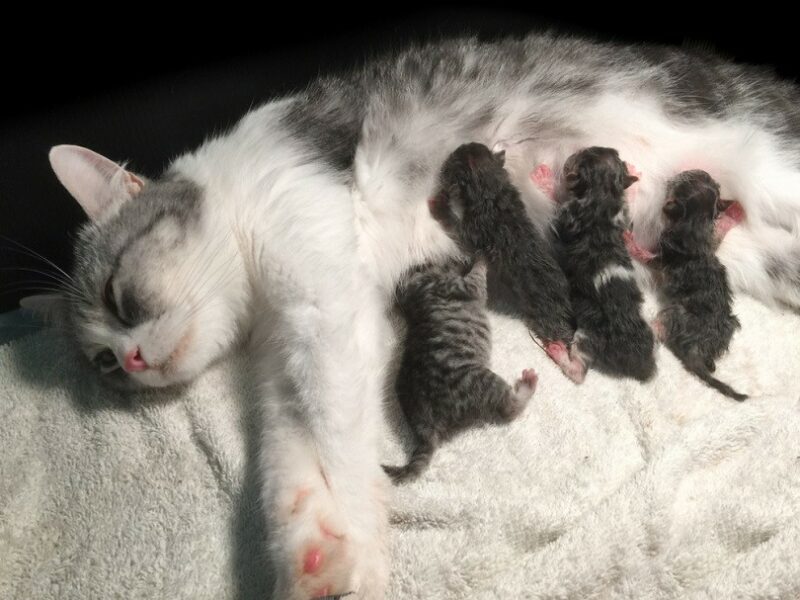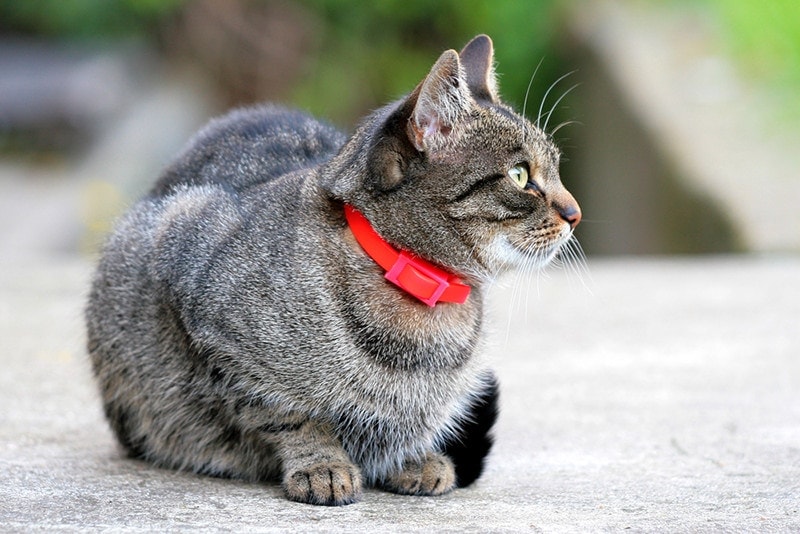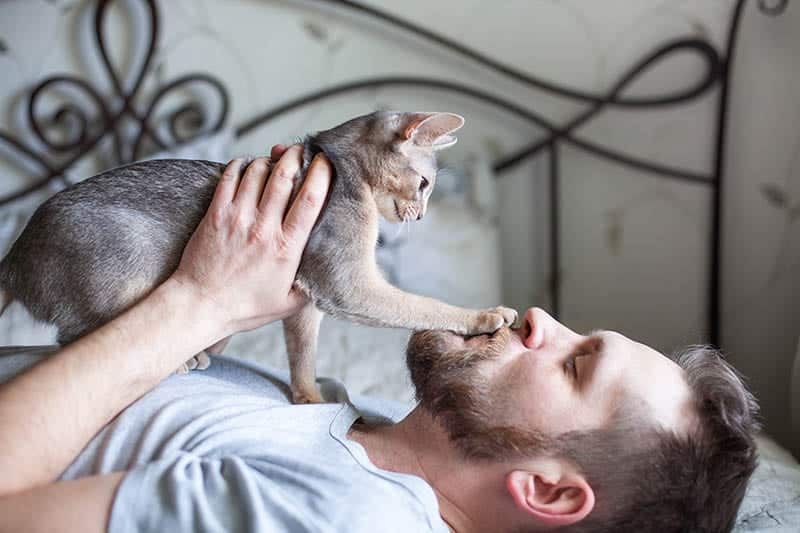Cats are like snowflakes: Each is beautiful and unique in their own way. Some cats are relaxed and calm much of the time, while others are energetic and silly.
But some cats are shy and seem quite anxious; besides cowering in a closet during a thunderstorm, they’ll run away to hide just when someone knocks on your door.
Whether your adult cat that you’ve had for 5 years is a shy cat or you’ve just adopted one, we discuss here how to help give your cat more confidence and adjust to their new home.

Why Is My Cat So Shy?
Most cats are a bit shy, and they are not fond of change and prefer things to stay the same. When something occurs that they aren’t sure of or accustomed to, they will usually hide, which is a perfectly normal response from a scared cat.
But some cats are quite timid, and there are several reasons for this.
Lack of Desensitization
From as young of an age as possible, kittens must be desensitized and socialized by being exposed to new sights, sounds, people, objects, and other animals. This teaches them that new things aren’t necessarily scary. Desensitization is a continuous process, and if your cat wasn’t socialized well as a kitten, they will be more fearful of new people and situations, making for a shy adult cat.
The Cat’s Temperament
There are cats that are just naturally shy. Among people, there are extroverts and introverts, so some cats tend to be more introverted than others.

Underlying Illness
If the shyness seems to have occurred recently and they veer away from you when you attempt to pet them or pick them up, there’s the potential for an underlying illness.
Your cat might also be in pain or not feeling well, which will make them naturally hide and stay away from people.
The Cat’s Breed
Certain breeds have specific temperaments, such as Bengals, which are intensely energetic, and Persians, which are super calm. Some breeds love attention, while others prefer to keep to themselves, which might be misconstrued as shyness.
Noisy Household
This issue can definitely affect introverted cats. If your home tends to be noisy and rather chaotic at times, it is likely too much for a shy cat.
Some cats can handle a great deal of noise and the commotion of people coming and going. However, other cats will become overstimulated and overwhelmed and will look for a quiet place to hide.
Past Experiences
Adopted cats from a rescue have uncertain backgrounds and sometimes come from abusive or neglectful homes. Perhaps you adopted a stray cat that just needs time to get used to being around people.
Many of these cats are quite scared of humans because of their history and need time to learn to trust anyone.
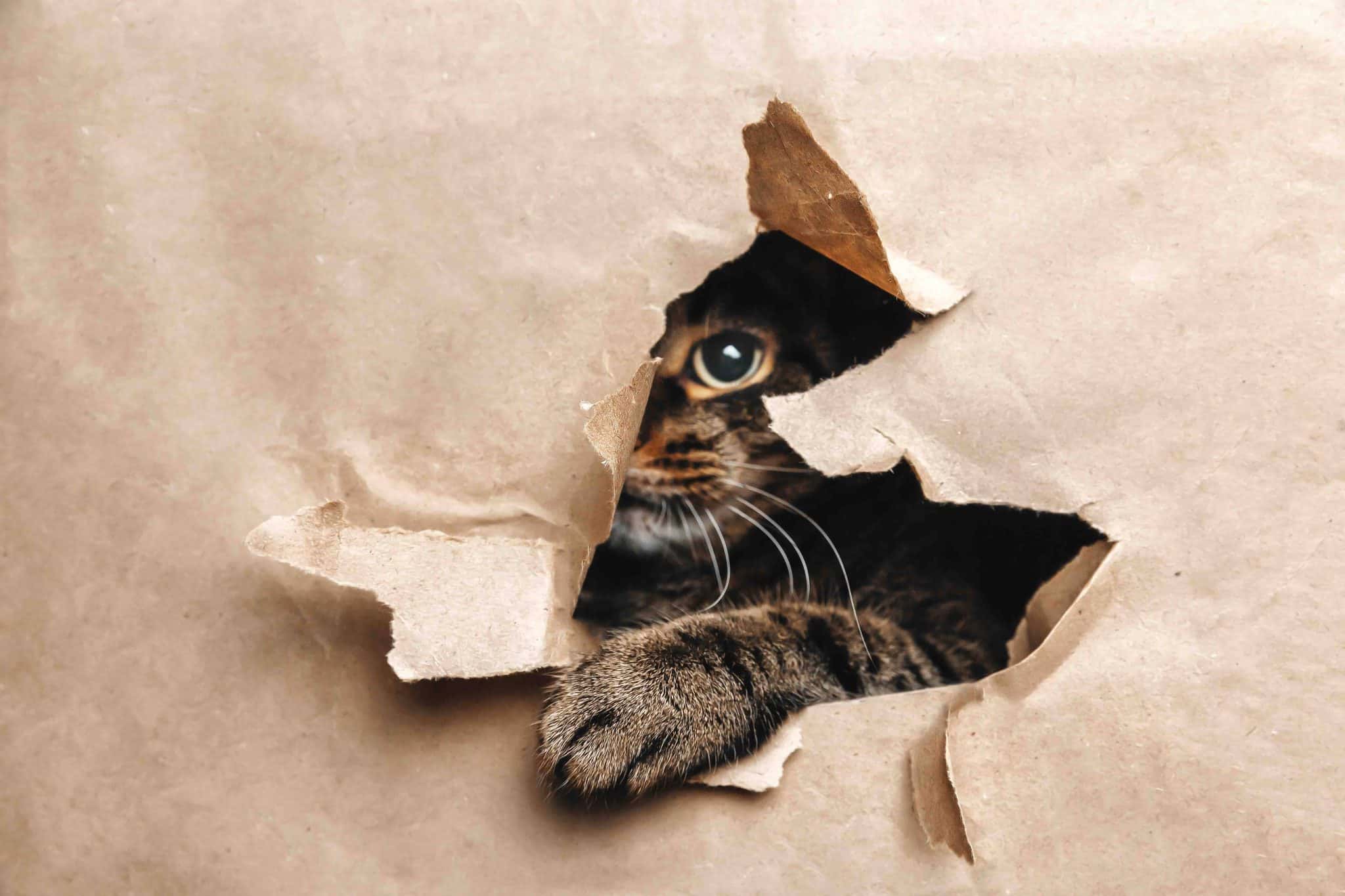

How to Get a Shy Cat to Trust You
Getting a shy cat to come to you and trust you takes time and patience. This is the scenario that you’ll be dealing with whenever you bring home a new cat.
Your first steps will always be to give your cat time to adjust to their new surroundings and not force any kind of interaction with them.
1. Set Up a Safe Place
This is a good rule whether your new cat is shy or not. In fact, if they’re coming from a shelter, you might not have a great idea of your new cat’s temperament.
You should have a room set up for your cat before you bring them home. It should be pet-proof and have a cat tree, a scratching post, toys, food, water, and a litter box. Let your cat get used to their safe and quiet room. You can open the door after a few days so they can come out and explore the rest of the place when they’re ready.
Consider placing cardboard boxes in a few locations throughout your home to give your cat places to hide if they are startled.
2. Do a Slow Introduction
You’ll need to take things slowly and steadily to get your cat to like you. Go into your cat’s room and sit nearby. If they are under a piece of furniture, sit on the floor so they can see you.
Speak to them in a calm voice—even try reading out loud from a book. This way, they’ll become familiar with your scent and voice. Don’t attempt to touch them unless they approach you, but even then, if they shy away from your hand when you reach out, don’t force it.
Your cat needs to hide for now; after all, they are in a strange place with strange smells and sounds, and they will need to add their scent, which they do by rubbing everything.
Allowing your cat to come to you on their own terms will help give them confidence.

3. Learn Their Body Language
Become familiar with your cat’s body language. They will display their mood in subtle and not-so-subtle ways.
- Eyes: Wide or narrowed
- Ears: In “airplane” mode (ears rotated to the sides, angled backward)
- Whiskers: Might be pushed forward
- Tail: Held close to their body or thrashing and thumping
- Body: Stiff and tense low to the ground
- Eyes: Wide eyes and dilated pupils
- Ears: Angled sideways or backward (truly scared cats will have them pinned back)
- Tail: Wrapped around them tightly
- Body: Crouching low and making themselves as small as possible
If your cat is hissing or growling, you should know to keep away.
4. Give Them Plenty of Treats
Using treats to bribe your cat to come to you might work; it just depends on how freaked out they are. However, it is not recommended to offer them a treat if you notice that they are nervous or scared because you will be reinforcing that exact behavior. Instead, give them space, and allow them to enjoy the treat while getting used to your presence. Lickable treats are ideal for enticing your cat. But you might need to put the treat on a plate and then back away to give your cat space until they’re ready to come closer. You can work on gradually reducing the distance between you and the cat, but you should not rush it, especially at the beginning. The focus should be on calm behavior and allowing the cat to get closer on their terms.
5. Get Them Appropriate Toys
As long as your cat isn’t seriously stressed or scared, playing with toys near them might make them forget that they’re shy. Feather wands, fishing line toys, springs, and catnip mice can be effective lures for most cats.
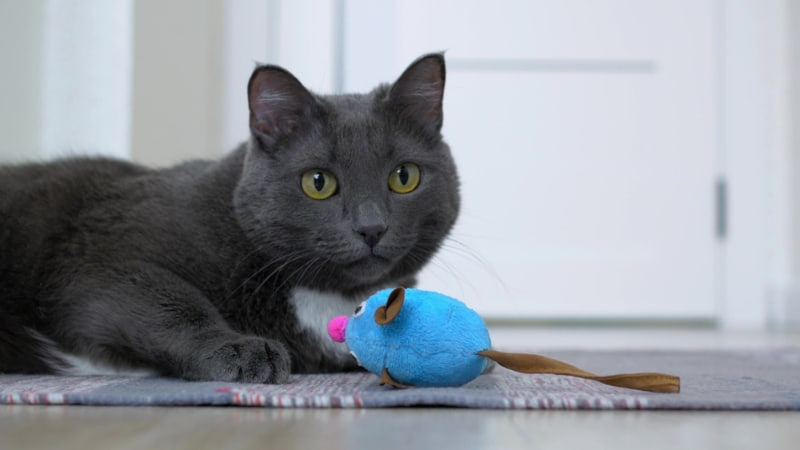

How to Socialize a Shy Cat
The previous tips will help your shy cat learn that you are not a threat, but we have extra tips to help further socialize your cat, which will also give them more confidence.
Building a shy cat’s confidence will still require patience, as they should never be forced into a situation that makes them uncomfortable.
1. Ask a Friend for a Favor
If your cat hides when you have guests over, you’ll need to start slowly. Remember that when someone visits, your cat might be startled by the loud knocking or doorbell, as well as the kind of boisterousness that comes with a visitor.
Ask a friend or a relative who doesn’t live in your home to visit, but ask them to knock gently and enter the home quietly. Request that they sit on the floor and not stare at or try to touch your cat. Give them treats and/or toys, and see if they can draw your cat out of hiding. This will hopefully start to show your cat that guests can be trusted.
2. Put Them in a Safe Place
Place your cat in what they consider a safe space, such as a box or carrier large enough for them to move around, and then try having a few guests over. Put the carrier in the room with the guests, and cover it partially with a towel or blanket. Keep the noise level as low as possible.
If your cat’s body language tells you that they are doing as well as can be expected, ask a few of your visitors to speak to your cat and offer them a treat.
You’ll need to go through this process several times. If your cat seems calm after a few gatherings, you can try opening the door of the carrier and eventually, bring them out to mingle.
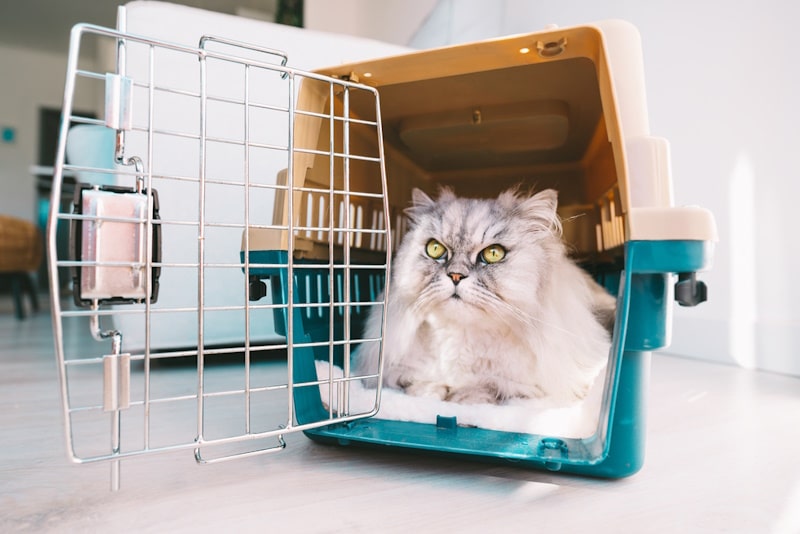
3. Use Pheromones
Several products are available for calming anxious cats. Feliway is a well-known brand that makes pheromone products designed to calm cats, in diffuser and spray form.
There are also calming treats, supplements, and even collars. In certain cases, using several products at once might be necessary.
4. Talk to a Vet
If you’re worried about your cat’s shyness, particularly if you’ve tried everything and are concerned for their well-being, speak to a vet. They can give you more advice and tips, or if necessary, they might prescribe an anti-anxiety medication.
If you need to speak with a vet but can't get to one, head over to PangoVet. It's an online service where you can talk to a vet online and get the advice you need for your pet — all at an affordable price!


Conclusion
The most critical takeaway here is that the best thing that you can do for your cat is to be tremendously patient.
Everything must be done slowly, calmly, and quietly. The more time you give your cat to adjust, the more you’ll add to their confidence.
Remain consistent, and let them do things on their own terms, and you might just find yourself with a slightly more confident cat!
Featured Image Credit: Susan Schmitz, Shutterstock
